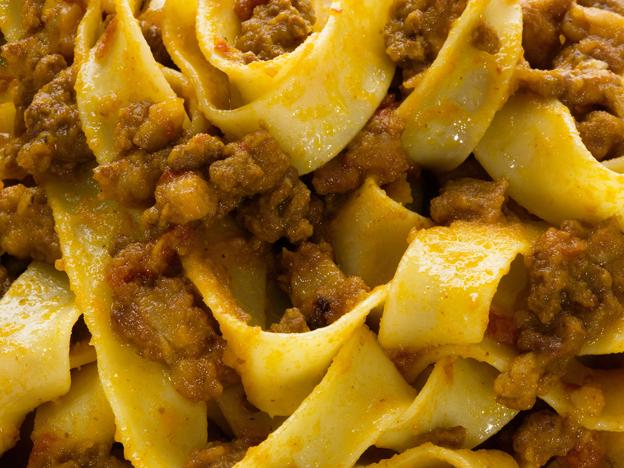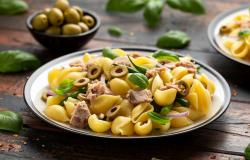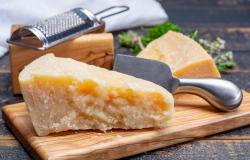So, What is the Correct Measurement of Authentic Tagliatelle from Bologna?
ITA:

Use player to listen to Italian version
by Silvia Donati
Bologna’s Chamber of Commerce, located inside the Palazzo della Mercanzia, which was once the merchants’ square, guards the traditional recipes of the city, registered with notary deeds.
Among them is a type of pasta that is synonymous with the city: tagliatella bolognese. Actually, the first official recipe registered with the Chamber of Commerce, on April 16, 1972, was precisely that of the tagliatella.
The recipe for the dough calls for:
(ingredients for four people)
400 gr flour
4 eggs
A pinch of salt
½ spoon of flour to work the dough
But the official recipe also specifies the width that the authentic tagliatella should have: 8mm (0.314 inch) when cooked, or the 12,270th part of the height of the Asinelli Tower, a Bologna landmark. How do you get to that measurement? It has to be between 6 ½ and 7 mm (0.255-0.275 inch) when you cut the dough in strips depending on how hard the dough has turned out.
This measurement has even been reproduced in a golden tagliatella sample on display at the Chamber of Commerce. “Any other size,” says the deed, “would make it lose its inimitable character.”
When was the tagliatella invented? According to legend, it was invented by the Bolognese chef Zefirano, who was inspired by Lucrezia Borgia’s blonde hairdo, when she came to Bologna in 1487 to marry the duke of Ferrara, Alfonso I d’Este. But this is just a legend, invented by the Bolognese humorist and illustrator Augusto Majani in 1931.
We don’t really know how the tagliatella came to be, but what we know is that, in the 19th century, it was a common dish in the entire area of Bologna.
If you, like the Bolognesi, are a big fan of tagliatella, you should know that there is even a day set aside for its celebration: January 17, International Tagliatella Day.
di Silvia Donati
La Camera di Commercio di Bologna, situata all'interno del Palazzo della Mercanzia, che in passato era il foro dei mercanti, custodisce le ricette tradizionali della città, registrate con atti notarili (a Bologna non si scherza quando si parla di cibo!).
Tra queste vi è un tipo di pasta simbolo della città: la tagliatella bolognese. La prima ricetta ufficiale depositata presso la Camera di Commercio, il 16 aprile 1972, fu proprio quella della tagliatella.
La ricetta per la sfoglia richiede:
(Ingredienti per quattro persone)
400 gr di farina
4 uova
Un pizzico di sale
½ cucchiaio di farina per lavorare l'impasto
Ma la ricetta ufficiale specifica anche la larghezza che la tagliatella autentica dovrebbe avere: 8 millimetri quando è cotta, o la 12.270esima parte dell'altezza della Torre Asinelli, un simbolo di Bologna (!). Come si ottiene questa misura? Al momento del taglio a strisce, la sfoglia deve misurare tra i 6 ½ e 7 mm a seconda della durezza della pasta.
Questa misura è stata anche riprodotta in un campione d'oro esposto presso la Camera di Commercio. “Qualsiasi altra dimensione,” dice l'atto notarile, “farà perdere alla tagliatella il suo carattere inimitabile.”
Quando è stata inventata la tagliatella? Secondo la leggenda, fu inventata dal cuoco bolognese Zefirano, ispirato dalla bionda capigliatura di Lucrezia Borgia, quando questa arrivò a Bologna nel 1487 per sposare il duca di Ferrara, Alfonso I d'Este. Ma si tratta solo di una leggenda, inventata dall'umorista e illustratore bolognese Augusto Majani nel 1931.
Dunque non sappiamo come la tagliatella sia nata, ma quello che sappiamo è che, nel XIX secolo, era un piatto comune in tutta l'area di Bologna.
Se anche tu, come i Bolognesi, sei un grande fan della tagliatella, dovresti sapere che c’è una giornata dedicata alla sua celebrazione: il 17 gennaio, la Giornata Internazionale della Tagliatella.











